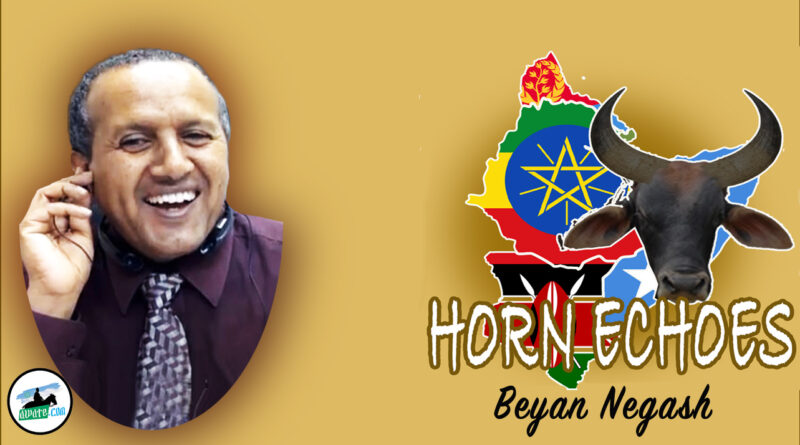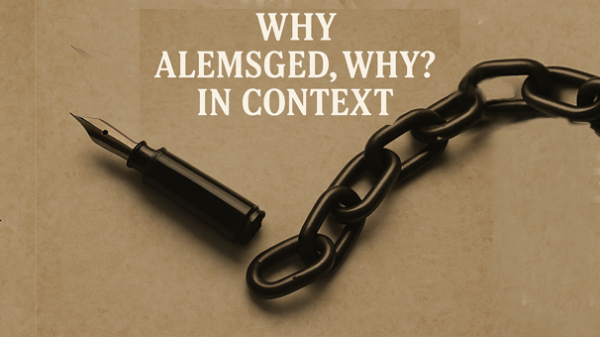A Mirror Between Literature and History

In moments of historical rupture, when the line between remembering and rewriting blurs, we return to mirrors, not to admire or accuse, but to see again. This reflection emerges in the wake of a series of meditations on memory, language, and the ethics of naming: The River Remembers. Written during a time marked by silence and suspension of protests, of publications, of public reckoning, these essays sought not to chronicle events but to sense their reverberations. This final installment does not declare an end; rather, it folds the inquiry inward, toward the disciplines of history and literature, and the divergent ways they attempt to speak across time: a reflection largely inspired by two recent articles that sparked robust discussion on Awate.
At its center is a tension between The Turn in historiography, where narrative self-reflexivity altered how we engage the past, and literature’s refusal to be linear or obedient. But rather than theorize this divide, the piece lets it breathe through metaphor, through pause, through the quiet unrest of questions left unresolved. In doing so, it gestures toward a different kind of storytelling, one that doesn’t seek to own history but to feel its heat, hear its breathing, and recognize when it enters the room unannounced.
What began as a series about national memory ends as a whispered recognition: we are always writing from within the story, never outside it. And sometimes, the mirror does not reflect what was; it refracts what might yet be.
“Let the historian name the year. Let the state etch it in marble. But let the wound name the song.” There comes a moment when a date no longer serves as a marker of memory but becomes a coffin for it.
This reflective essay engages the evolving tension between history and literature, between what is recorded and what resists record. In recent years, with growing global scrutiny of archival violence and representational absences, scholars have noted a methodological pivot, what is often termed The Turn, from positivist historical narration to a more pluralistic, memory-sensitive mode. While this shift is welcome, it remains incomplete. The refusal of certain communities, particularly those shaped by colonial and postcolonial rupture, to be archived is not merely a matter of silence; it is an insistence on survival in untranslatable form.
This is where literature intervenes.
History tends to follow a trajectory: event, date, documentation, commemoration. But lived memory, especially in contexts shaped by repression and exile, follows a different logic. Some wounds refuse to heal on archival terms. They do not want closure; they want recognition. Not to be filed, but to be felt. A disclosure of sorts is in order: Therefore, let me be clear: this is not an anti-historical diatribe. Nor is it a celebration of ambiguity for its own sake. Rather, it is a critique of epistemic overreach, of the assumption that what is not written does not exist, that what cannot be dated cannot be claimed.
Take the commemorative impulse, for example. A regime may declare a day of liberation. Statues may be erected, and speeches delivered. But what of the mother who lost all three sons to that same revolution, only to be told there is no place for her mourning in the national mythos? What of the daughter born in exile, who inherits the silence of her parents as her primary language?
Historical narration often struggles with these absences. Literature, by contrast, inhabits them.
In that sense, I & Eye, the novel that serves as a distant echo behind this reflection, does not offer an alternative history; it offers a different register. It does not correct the official timeline; it complicates it. It asks what lies beneath the polished stone of the monument and what ghosts still speak in the margins of national anthems. It returns to the mother, the exile, and the unspeaking child, not as footnotes to history but as full interlocutors.
In doing so, the novel joins a lineage of African and diasporic literature that has long taken up the challenge of speaking where the state has silenced. From Season of Migration to the North (Salih, 1966) to Decolonising the Mind (Ngũgĩ, 1986), writers have interrogated both colonial imposition and postcolonial erasure. These texts, like I & Eye, offer a mode of remembering that is riverine, not architectural, fluid, recursive, and unfinished.
One may recall that The Turn in historiography, informed by thinkers like Hayden White, Michel-Rolph Trouillot, and Joan Scott, emphasized narrative construction and the politics of selection in historical memory. This was a welcome disruption. Yet, literature had long already practiced what historians only later theorized. The rupture, the haunt, the whispered name—these are not afterthoughts in fiction. They are structures.
In this light, the archive becomes less a repository of fact and more a battleground over legitimacy. Who gets to be remembered? Who is deemed cite-worthy? Who is documented only in absence? The challenge, then, is not to abandon the archive but to read against it, to recognize that breath, gesture, and song often carry more weight than decree. That refusal is not silence but a political act.
Consider the following juxtaposition: when a young man disappears across the border, the state may record it as population movement, and the historian may log it under migratory trends. But literature returns to the silence he left behind, the mother who never again sleeps with both eyes closed, and the room that remains untouched. That is the function of the literary, not to add data, but to insist on depth.
This is where I & Eye places itself, not as a corrective to history but as a mirror to what history cannot reflect. Not to dispute a date, but to question its cost. Not to challenge the existence of the archive, but to reveal what it could not hold. In this, it belongs to the same moral genealogy as The Conscript (Hailu, 1927/1950), a novel that lamented clerical complicity during colonial rule, or Tayeb Salih’s Season, whose Mustafa Sa’eed dissects the epistemic violence of colonial intrusion with surgical precision. These works do not dwell in nostalgia or erasure; they dwell in reckoning.
The risk of relying solely on commemorative history is that it begins to mirror the very colonial logic it sought to overcome: classification, categorization, and containment. Eritrean history, particularly in its post-liberation form, has too often fallen into this trap. The heroic narrative, frozen in 1991, does not account for the everyday betrayals that followed, the silence around the disappeared, the exile of thought, or the criminalization of memory.
Hence, the necessity of the literary, not merely as supplement but as solvent.
In The River Remembers, a concept that has surfaced repeatedly in reflective conversations across platforms, there emerges a model of memory not constrained by chronology. This is not a national memory. It is not even an individual one. It is something more elemental. A riveting memory. One that flows where others would build dams. One that refuses closure, insists on breath, and, most crucially, refuses to be archived. So let the historian name the year. Let the state chisel it into stone. But let literature do what neither dares: cradle the tremor, translate the wound, and sing what never asked to be silenced.
With an I to note the date,
and with the Eye to notate.
BNB
|
|


Awate Forum